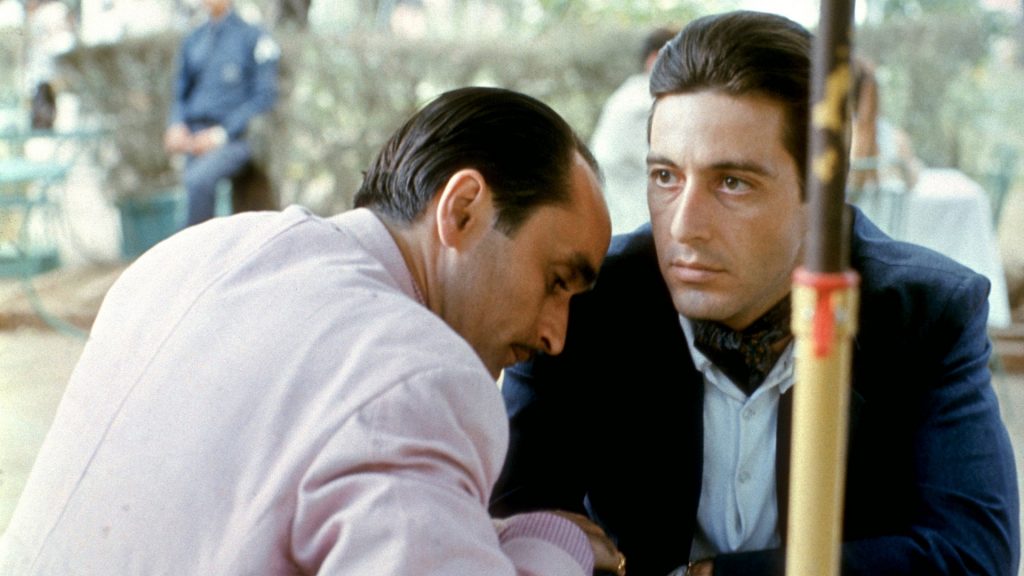The Godfather: Part II (1974)

There are many that tout the second chapter in the Corleone saga as superior to the original, and while I can definitely understand why I’m not necessarily inclined to agree from a personal taste standpoint. It’s a subject which divides many people who love both films, and some people are conflicted within themselves, alternating between the first and second film depending on which they may have seen last. I will concede that the PART II is richer in characterization than the first, and perhaps in scope. Yet, I also feel that the original Godfather was a much tighter story, economizing a sweeping saga into a sleekly constructed tale. What it all boils down to is what you find more compelling, the storytelling or the characters?
Part II is both a sequel and a prequel to the first film, switching back and forth between the story of young Vito Corleone (De Niro) and Michael Corleone (Pacino). Although the two stories do not directly affect one another, Coppola, with help from novelist and screenwriter Mario Puzo, blends them in brilliant fashion so that one segues thematically into another in a way that serves to enhance rather than take away from the momentum of the overall story. In a way, this also effectively contrasts the difference between Vito, who started with nothing and worked his way up, and Michael, the one given everything and who tries to keep it all from crumbling.
The Godfather Part II is one of the best sequels ever made for a variety of reasons, with the best reason being that it simply isn’t a rehashing of the first film but an expansion of it. By going back to the beginnings of Vito Corleone, we are able to see how he came to power and the events that caused such a rise. We also get to see how his views and actions manifested themselves in his children, who have reaped both the blessings and sins of the father. The juxtaposition of Vito and Michael also offers a contrast between the personalities of the men, with Vito seeing his operations as a business and a way to keep honor for those who do him favors, and Michael who uses the business in a much colder fashion, being more prone to use his influence to exact revenge and influence the powers that be. Michael also doesn’t have the respect among the family his siblings had for the father, mostly gaining a facade of respect due to fear and strong-arming them to do his will.
Part II also is deeply rich in characterizations, even among the smallest of characters. Although the situations are grand, the characters behave in unpredictable ways, and even when we can guess what their actions will be in any given situation, the manner in which they are performed is often surprising, and realistic. These are characters Puzo and Coppola know through and through, and by the time we are done watching them for over six hours, we feel we do as well. The writing is prodigious, the lavish sets and costumes exquisite, and the themes resonant.
The Godfather Part II is absolutely essential viewing, especially for those who have seen the first film. Like the original, this is a remarkable achievement in filmmaking and continues the themes and story presented without the need for a retelling. It serves as a blueprint for how sequels should be, giving us more depth and background while pushing forward the characters in growth and complexity. Many people cannot separate this from the first film when putting them on their top 10 lists and I can understand why. They compliment each other so completely that after viewing them, it’s hard to imagine one without the other.
— Followed by The Godfather: Part III in 1990.
Qwipster’s rating: A+
MPAA Rated: R for strong violence and language
Running Time: 200 min.
Cast: Al Pacino, Robert De Niro, Robert Duvall, Diane Keaton, John Cazale, Talia Shire
Director: Francis Ford Coppola
Screenplay: Francis Ford Coppola, Mario Puzo (based on the novel by Mario Puzo)
